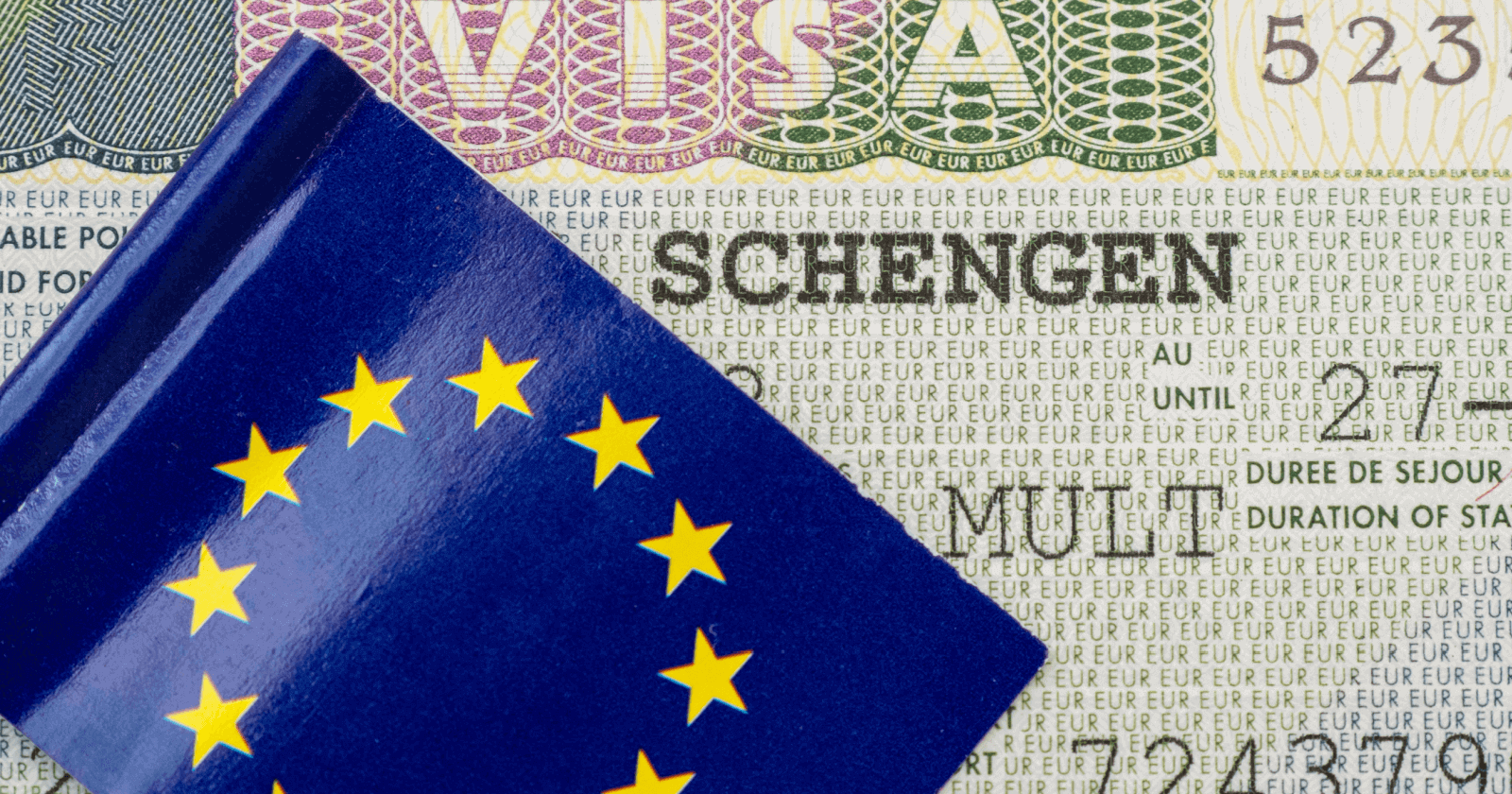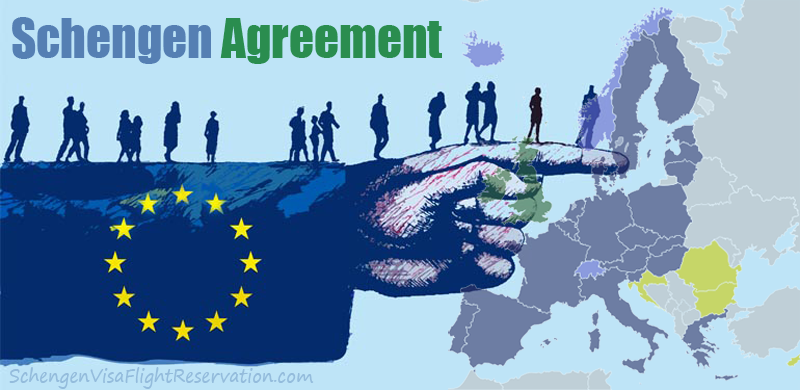
The Schengen Visa is one of the most essential travel documents for anyone looking to visit multiple European countries in a short period.
Named after the Schengen Area, which was established by the Schengen Agreement in 1985, this visa enables visitors to move freely across 27 European countries without the need for multiple visas or internal border checks.

Whether you are traveling for tourism, business, or family visits, the Schengen Visa allows you to explore Europe with ease. In this article, we’ll explore everything you need to know about the Schengen Visa, including its purpose, application process, eligibility requirements, and tips to increase your chances of approval.
What is the Schengen Visa?
The Schengen Visa is a short-stay visa that allows individuals to travel within the Schengen Area, a region that includes most European countries. With a Schengen Visa, you can visit any of the member countries for up to 90 days within a 180-day period. The visa facilitates smooth and border-free travel across the member states, making it ideal for tourists, business travelers, and even those visiting family members in Europe.
The Schengen Area was named after the Schengen Agreement, which was signed in 1985 in the village of Schengen, Luxembourg. This agreement initially aimed at removing border controls between European countries, and it has grown into one of the largest areas of free movement in the world. With the elimination of internal borders between member countries, the Schengen Visa simplifies travel for both EU and non-EU citizens.
Schengen Area Countries
The Schengen Area consists of 27 European countries that have abolished internal border checks. These countries work together to maintain common visa policies, ensuring easier entry and exit for travelers. These countries are:
- Austria
- Belgium
- Czech Republic
- Denmark
- Estonia
- Finland
- France
- Germany
- Greece
- Hungary
- Iceland
- Italy
- Latvia
- Lithuania
- Luxembourg
- Malta
- Netherlands
- Norway
- Poland
- Portugal
- Slovakia
- Slovenia
- Spain
- Sweden
- Switzerland
- Liechtenstein
- Norway
Note that countries like Ireland, Romania, Bulgaria, and Croatia are part of the European Union but are not yet included in the Schengen Area. United Kingdom was previously a member of the EU but chose to remain outside the Schengen Area even before Brexit.
Non-EU Schengen Area Members
Although the Schengen Area primarily consists of European Union member states, there are also four non-EU countries that have opted into the agreement:
- Norway
- Iceland
- Switzerland
- Liechtenstein
These countries follow the same visa and travel policies as the EU nations, meaning you can visit these countries with the same visa as you would for EU countries. However, countries like Cyprus, Romania, Bulgaria, and Croatia are still in the process of becoming part of the Schengen Area.
The Purpose of the Schengen Visa
The Schengen Visa serves multiple purposes, all centered around facilitating free movement and fostering closer integration between European countries. Some of the primary reasons for having the Schengen Visa include:
- Tourism: The most common use of the Schengen Visa is for tourism. If you want to explore the culture, history, and scenic beauty of Europe, the Schengen Visa allows you to visit one or more countries on a single trip.
- Business: Business travelers use the Schengen Visa to attend meetings, conferences, and networking events within the Schengen Area.
- Family Visits: You can visit family members or friends who live in Schengen countries using this visa. A formal invitation from the host may be required for this type of visa.
- Study: Students wishing to attend academic programs or short courses in the Schengen Area can use a student Schengen Visa for stays up to 90 days.
- Cultural and Sports Events: People who are attending cultural, sporting, or educational events within the Schengen Area can apply for this visa.
The Schengen Visa allows you to stay for up to 90 days within a 180-day period. This means that after staying in Schengen countries for 90 days, you must leave the area for at least 90 days before you can return. The 90-day period applies to the entire Schengen Area, not individual countries.
Types of Schengen Visas
There are several types of Schengen Visas, depending on the purpose of your visit and the frequency of your travel. These include:
1. Tourist Visa (Type C)
The tourist visa is the most common type of Schengen Visa. It is issued to individuals who wish to visit the Schengen Area for leisure or tourism purposes. This visa is typically valid for short stays of up to 90 days within a 180-day period. You can use this visa to visit multiple countries in the Schengen Area.

2. Business Visa (Type C)
The business visa allows individuals to attend business-related events, meetings, or conferences. This visa also allows short visits to multiple Schengen countries for business purposes. The eligibility requirements are similar to the tourist visa, but applicants may need to provide evidence of their business activities, such as invitations from companies or event organizers.

3. Family or Friend Visit Visa (Type C)
This visa is granted to individuals visiting family or friends in the Schengen Area. Applicants must provide an invitation letter from the person they are visiting. In some cases, proof of financial means or travel insurance may also be required.

4. Transit Visa (Type A)
A transit visa is necessary if you need to pass through the Schengen Area to reach a non-Schengen country. This visa typically allows a short stay in an international airport or a brief period of stay in the country. The transit visa does not allow you to leave the airport.
5. Long Stay Visa (Type D)
The long-stay visa allows individuals to stay in the Schengen Area for more than 90 days. This visa is typically issued for those who are visiting for purposes like work, study, or joining a family member. It requires more documentation and a longer application process compared to the short-stay visa.
6. Multiple Entry Visa (Type C)
For travelers who need to enter and exit the Schengen Area multiple times during their trip, the multiple-entry Schengen visa is the best option. It allows the holder to stay within the Schengen Area for multiple short stays within the validity period of the visa (usually for up to 1, 3, or 5 years).
Eligibility for a Schengen Visa
While the application process for a Schengen Visa is similar for most applicants, there are specific eligibility requirements that travelers must meet to gain approval. These include:
- Valid Passport: Your passport must be valid for at least three months beyond the intended date of departure from the Schengen Area. It must also have at least two blank pages for visa stamps.
- Purpose of Travel: You must provide proof of the purpose of your visit, whether it is for tourism, business, visiting family or friends, etc.
- Financial Means: You must show that you have sufficient funds to support yourself during your stay. This can include recent bank statements, pay slips, or sponsorship letters.
- Travel Insurance: Applicants must have valid travel insurance that covers medical emergencies, hospitalization, and repatriation for the entire duration of the stay.
- Accommodation Proof: You must show evidence of where you will stay during your visit, such as hotel reservations or an invitation letter from a host in the Schengen Area.
- Return Ticket: You must demonstrate that you have a return ticket or onward travel arrangements showing that you plan to leave the Schengen Area at the end of your visit.
- Good Travel History: A positive travel history (e.g., having previously visited other countries without overstaying your visa) can help increase your chances of approval.
Application Process for a Schengen Visa
The application process for the Schengen Visa is relatively straightforward, but it requires careful attention to detail. Here’s a step-by-step guide to applying:
Step 1: Determine Which Country to Apply To
The first step in applying for a Schengen Visa is determining which country to apply to. This depends on the following:
- Main Destination: If you plan to spend the most time in one country, apply to that country’s consulate or embassy.
- First Point of Entry: If you plan to visit multiple countries and do not have a clear main destination, apply to the country you will first enter.
Step 2: Complete the Application Form
Once you know where to apply, you need to complete the Schengen Visa application form. The form is available online and should be filled out accurately. Ensure that all fields are filled out completely, as mistakes can cause delays or even rejection.
Step 3: Gather Supporting Documents
You will need to submit various supporting documents along with your application form. These typically include:
- Valid passport (with at least two blank pages and validity for 3 months beyond your travel date)
- Two passport-sized photos
- Proof of financial means (bank statements, payslips, etc.)
- Proof of accommodation (hotel bookings, invitation letter)
- Travel insurance covering medical emergencies
- A detailed travel itinerary, including flight bookings and accommodation details
Step 4: Schedule an Appointment
Contact the consulate or visa application center of the country you are applying to in order to schedule an appointment for submitting your application and attending the interview.
Step 5: Submit the Application
Submit your application along with the required documents at the consulate or visa application center. You may also need to attend an interview where you will be asked about your travel plans and other relevant details.
Step 6: Wait for Processing
Processing times for Schengen Visas generally take between 7 to 15 days, but it is advised to apply at least 3 weeks before your intended departure date.
Step 7: Receive the Visa Decision
Once your application is processed, you will be informed of the decision. If approved, your visa will be affixed to your passport, allowing you to travel within the Schengen Area.
Common Reasons for Schengen Visa Refusals
While most applicants are granted a Schengen Visa, there are some common reasons for refusal. These include:
- Insufficient Documentation: Missing or incomplete documents can lead to visa rejection.
- Lack of Proof of Financial Means: Failure to prove you have sufficient funds can result in a denial.
- Unclear Purpose of Travel: If you cannot demonstrate the purpose of your visit clearly, your application may be rejected.
- Previous Immigration Violations: A history of overstaying previous visas or illegal immigration can lead to a refusal.
- Inaccurate Information: Providing false or misleading information on your application can result in automatic denial.
Conclusion
The Schengen Visa is a powerful tool for travelers who wish to visit multiple European countries with ease. It simplifies travel between the member states, eliminating border controls and enabling people to explore Europe with one single visa. By understanding the types of Schengen Visas, the application process, and the eligibility requirements, you can increase your chances of receiving approval for your trip.
Whether you are traveling for business, tourism, or family visits, the Schengen Visa offers great convenience. By following the application process carefully, providing the necessary documents, and ensuring you meet all eligibility requirements, you can enjoy a seamless experience traveling across some of the world’s most fascinating countries.
Relocation Mobility Deliz specializes in providing comprehensive support for individuals navigating the Schengen visa application process. With expertise in visa requirements, document preparation, and the intricacies of Schengen regulations, they offer tailored services to ensure a smooth and efficient application experience. Whether you’re applying for a short-term tourist visa or a long-term residency permit, Deliz can guide you through every step, helping you gather the necessary paperwork, submit accurate forms, and ensure compliance with the specific criteria of the Schengen Area.
